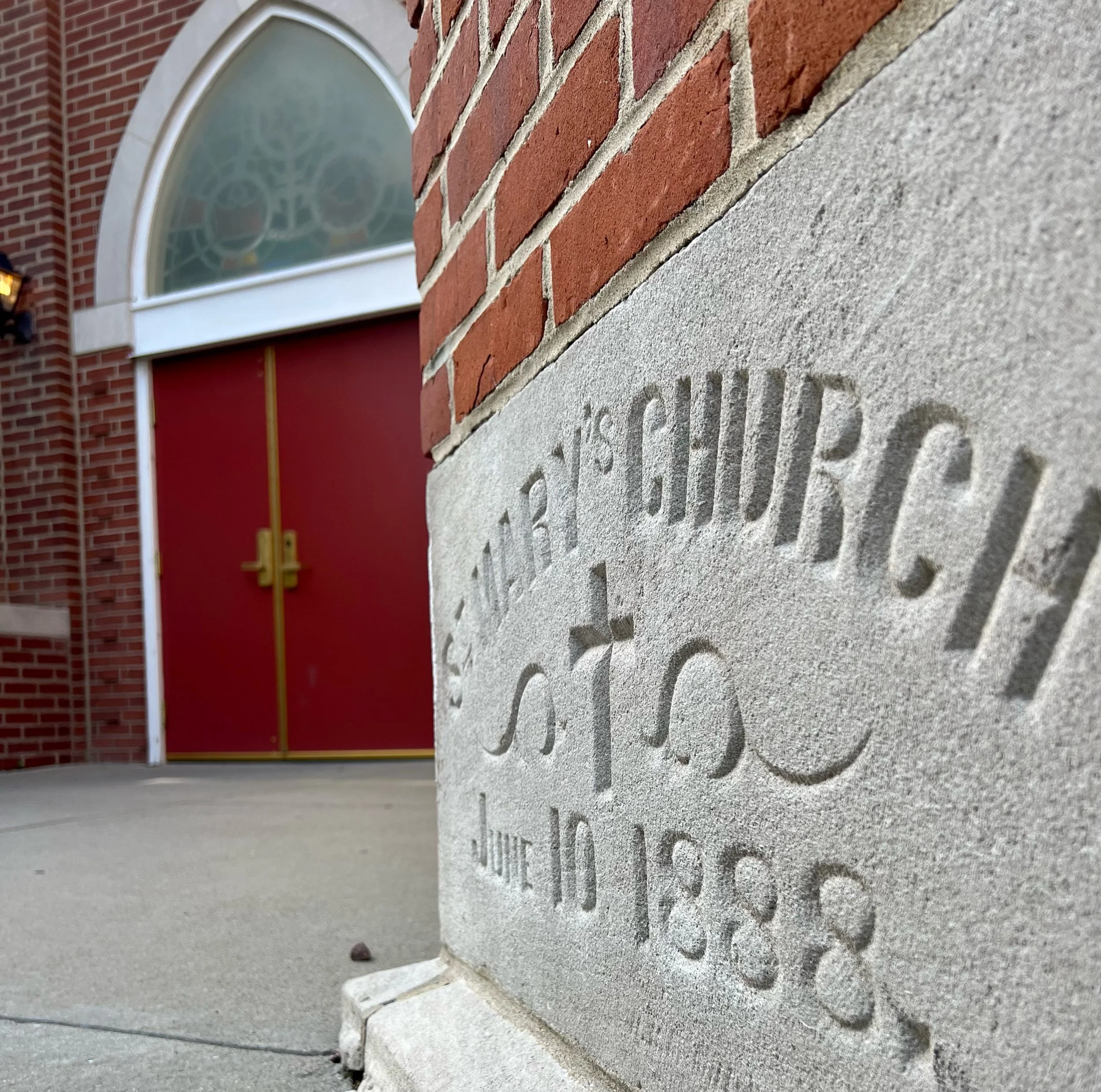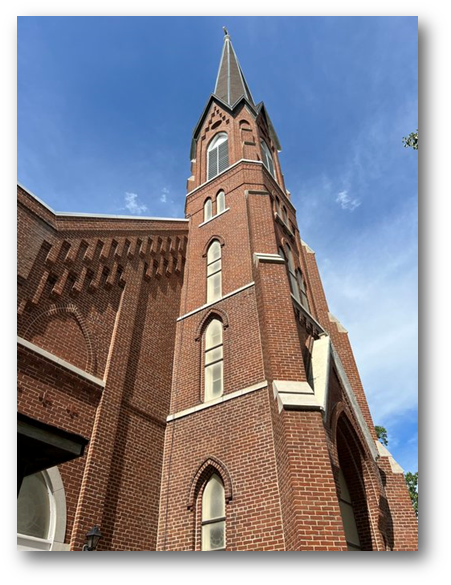St. Mary’s Church History
St. Mary Catholic Church first emerged alongside the introduction of the Illinois Central Railroad to Champaign County, Illinois in 1852 (St. Mary’s Vertical File). The labor-intensive project attracted approximately 8,000 to 10,000 workers. Most of the workers were Irish Catholics with a small German Catholic population as well. In order to provide religious services for the workers, Fr. Thomas Ryan of the Diocese of Chicago established a brick church in 1854 (St. Mary’s Vertical File). Within two years the church was officially recognized by the diocese. St. Mary Catholic Church was the first Catholic church in the area (St. Patrick’s Parish, 1994, p. 3).
St. Mary’s Parish expanded its ministry through a sustained construction effort. A pastoral center was erected in 1871, followed by a school in 1878, and a convent in 1885 (News-Gazette, October 24, 1891). Within a few years, plans were put forward to construct a new church building. The cornerstone of the new St. Mary Catholic Church was dedicated by the Diocese of Peoria on October 28, 1888 (St. Mary’s Vertical File). While the initial school accommodated 200 students, this figure grew. In 1915, Fr. Richard Flynn directed a St. Mary’s School building campaign to replace the existing facility. Fr. Flynn also helped to create St. Mary’s Emergency Hospital in 1920, which is Mercy Hospital today (St. Mary’s Vertical File).
The early growth of St. Mary Catholic Church was not without its difficulties. By the mid-twentieth century, the church community confronted a growing crisis in Catholic education. Catholic schools in the Diocese of Peoria suffered from a shortage in religious teachers and available funding. Much of the problem stemmed from the inability of parish schools to replace Catholic sisters who served as teachers. Many Catholic schools in the diocese were forced to shut down (O’Rourke, 1970, p. 141). Rather than follow suit, St. Mary Catholic School consolidated with Holy Cross Catholic School in 1968. The decision, in effect, closed St. Mary’s School and served as a turning point in the church’s history. In the absence of parochial education, religious education programs assumed greater significance (O’Rourke, 1970, p. 141). St. Patrick Catholic Church later provided many of these programs.


